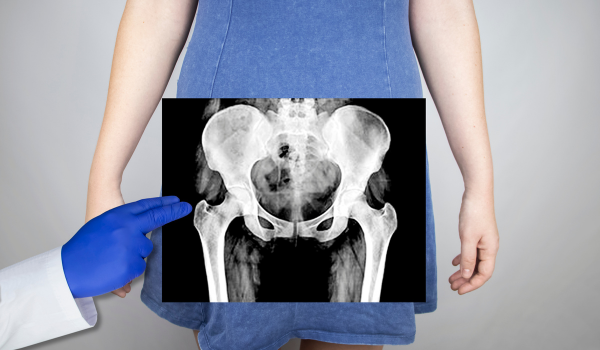.png)
Understanding the Basics
May-Thurner Syndrome (MTS) and Chronic Venous Insufficiency (CVI) are two distinct yet interconnected vascular conditions. While MTS involves the compression of the left iliac vein by the overlying right iliac artery, CVI results from malfunctioning valves in the veins of the legs. When left untreated, MTS can be a direct contributor to the development and worsening of CVI.
Understanding how these conditions relate is essential for early intervention, accurate diagnosis, and long-term management of venous health.
What Is May-Thurner Syndrome?
MTS is a vascular disorder caused by mechanical compression of the left common iliac vein by the right common iliac artery. This compression impedes venous blood flow from the left leg back to the heart.
Common symptoms include:
-
Left leg swelling
-
Aching or throbbing pain
-
Heaviness or fatigue in the leg
-
Increased risk of deep vein thrombosis (DVT)
While some people remain asymptomatic, others develop severe complications—including CVI—if the vein remains compressed for long periods.
What Is Chronic Venous Insufficiency?
Chronic Venous Insufficiency occurs when veins in the lower legs cannot adequately return blood to the heart. Normally, one-way valves in the veins prevent backward flow. When these valves fail or veins are damaged, blood pools in the lower limbs.
Symptoms of CVI include:
-
Persistent swelling (edema)
-
Skin discoloration or thickening
-
Varicose veins
-
Leg pain, cramping, or itching
-
Venous leg ulcers
CVI is progressive and worsens over time if not properly treated. MTS is one of the hidden causes of this failure in venous return.
The Link Between MTS and CVI
The primary way MTS contributes to CVI is through prolonged venous hypertension. When the iliac vein is compressed, blood flow from the leg slows down, leading to:
-
Increased pressure in the distal veins
-
Venous wall damage over time
-
Valve dysfunction due to backflow
As pressure builds, smaller veins and valves in the leg bear the burden, which leads to the onset of CVI symptoms. Essentially, MTS acts as a trigger and accelerator for chronic venous damage.
Undiagnosed MTS Behind CVI
Many patients diagnosed with CVI never receive evaluation for MTS. As a result, treatment fails to address the upstream problem, and symptoms persist or recur.
Red flags that CVI may be caused by undiagnosed MTS include:
-
Left leg involvement only
-
Onset of CVI symptoms in younger patients
-
Previous history of unexplained DVT
-
Resistance to standard CVI treatments
In these cases, vascular imaging should be used to explore potential iliac vein compression.
Progression from MTS to CVI
The progression from MTS to CVI often follows this pattern:
-
Asymptomatic Compression – The iliac vein is compressed but no symptoms are present.
-
Venous Outflow Obstruction – Blood flow is restricted, and mild symptoms such as heaviness or swelling appear.
-
Valve Dysfunction – Prolonged high pressure damages valves further down the leg.
-
CVI Symptoms Emerge – Chronic symptoms like edema, skin changes, and leg fatigue develop.
-
Advanced CVI – Ulcers, varicose veins, and irreversible tissue damage may occur.
Early detection of MTS can interrupt this sequence and prevent the onset of severe CVI.
Venous Hypertension and Its Role
One of the key mechanisms that connects MTS and CVI is venous hypertension—a condition where blood pressure in the veins is abnormally high.
Due to compression in MTS, the veins below the obstruction experience:
-
Backward pressure
-
Valve incompetence
-
Increased capillary leakage
This pressure causes the skin and subcutaneous tissues in the lower leg to deteriorate over time, leading to pigmentation, eczema, and in some cases, open ulcers.
Collateral Vein Formation
When the left iliac vein is blocked or compressed, the body tries to bypass the blockage by forming collateral veins. These veins often appear as:
-
Abnormal varicose veins in the pelvis, thigh, or abdomen
-
Veins bulging under the skin
-
Fragile, easily ruptured vessels
While collateral veins temporarily help reroute blood, they are not as efficient and can worsen the symptoms of CVI by overloading surface veins.
Venous Ulcers and MTS
Venous leg ulcers are among the most debilitating complications of CVI. When caused by MTS, these ulcers often:
-
Occur on the inner ankle or lower calf
-
Heal very slowly
-
Recur frequently
-
Lead to secondary infections
Without treating the iliac vein compression, wound care and standard CVI therapies will have limited success.
Why Standard CVI Treatment May Fail
CVI is usually treated with:
-
Compression stockings
-
Leg elevation
-
Exercise
-
Topical therapies for ulcers
However, in cases where CVI is secondary to MTS, these treatments address only the symptoms—not the root cause. Without correcting the iliac vein compression, symptoms may persist or recur, even with strict adherence to CVI management plans.
Diagnosing the Connection
To determine whether MTS is contributing to CVI, doctors may use:
-
Duplex Ultrasound: Initial screening for reflux and venous obstruction
-
CT Venography or MR Venography: Imaging of the pelvis to detect iliac vein compression
-
Intravascular Ultrasound (IVUS): Gold-standard method for confirming compression and measuring narrowing
Diagnosing the anatomical cause allows physicians to customize treatment and improve outcomes.
Stenting as a Solution
For patients with CVI caused or worsened by MTS, stent placement in the iliac vein can restore blood flow and reduce downstream pressure.
Benefits of stenting include:
-
Resolution of swelling
-
Improved ulcer healing
-
Prevention of future DVTs
-
Better quality of life
Stenting corrects the structural problem, which then reduces venous hypertension and helps valve function in the lower legs recover.
Post-Stenting Improvements
Following stent placement, patients often experience:
-
Decreased need for compression therapy
-
Reduction in pain and leg fatigue
-
Improved sleep due to fewer cramps or discomfort
-
Faster healing of any existing ulcers
However, long-term follow-up is required to ensure the stent remains open and functional.
Preventing CVI Progression
To prevent CVI from progressing after identifying MTS, patients should:
-
Stay active and avoid prolonged sitting or standing
-
Wear prescribed compression garments
-
Monitor for early signs of swelling or pain
-
Follow through on imaging and check-ups
-
Maintain a healthy weight
Proactive care keeps both MTS and CVI under control.
Special Populations at Risk
Some groups are more likely to develop MTS-related CVI:
-
Women: Due to hormonal changes and pregnancy
-
Sedentary Workers: Prolonged sitting increases compression
-
Postpartum Women: Increased clot risk and vascular stress
-
People with a History of DVT: Undiagnosed MTS is a common cause of recurring clots and CVI
These individuals should undergo evaluation when CVI symptoms appear.
Living with Both Conditions
For patients managing both MTS and CVI, the key is a combined approach:
-
Structural correction of MTS via stenting
-
Symptomatic relief through CVI protocols
-
Close follow-up with vascular specialists
-
Use of compression and lifestyle changes as daily routine
This combination improves not only leg health but overall quality of life.
Mental Health Considerations
Chronic leg pain, visible varicose veins, and non-healing wounds can impact mental health. Patients with MTS and CVI may experience:
-
Depression or anxiety
-
Reduced confidence in appearance
-
Social isolation due to mobility issues
Support groups, counseling, and education can help patients cope better and stay compliant with treatment.
Conclusion
May-Thurner Syndrome and Chronic Venous Insufficiency are intimately connected through shared vascular pathways and complications. MTS often goes undiagnosed until CVI symptoms appear—and by then, vein damage may already be significant.
Identifying and treating MTS early can stop the downward spiral into CVI. For those already living with both conditions, integrated care that addresses both the anatomical and functional issues offers the best chance at symptom relief and long-term stability.

.png)
.png)
.png)
.png)
.png)
.png)
.png)
.png)



